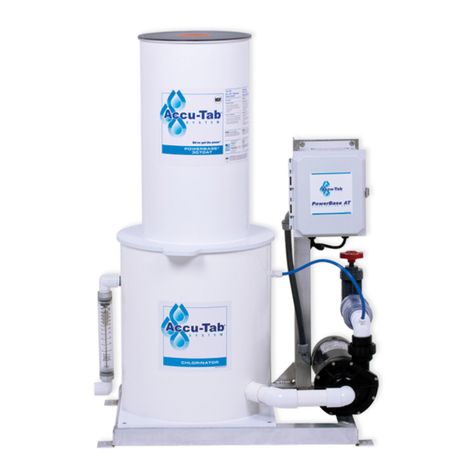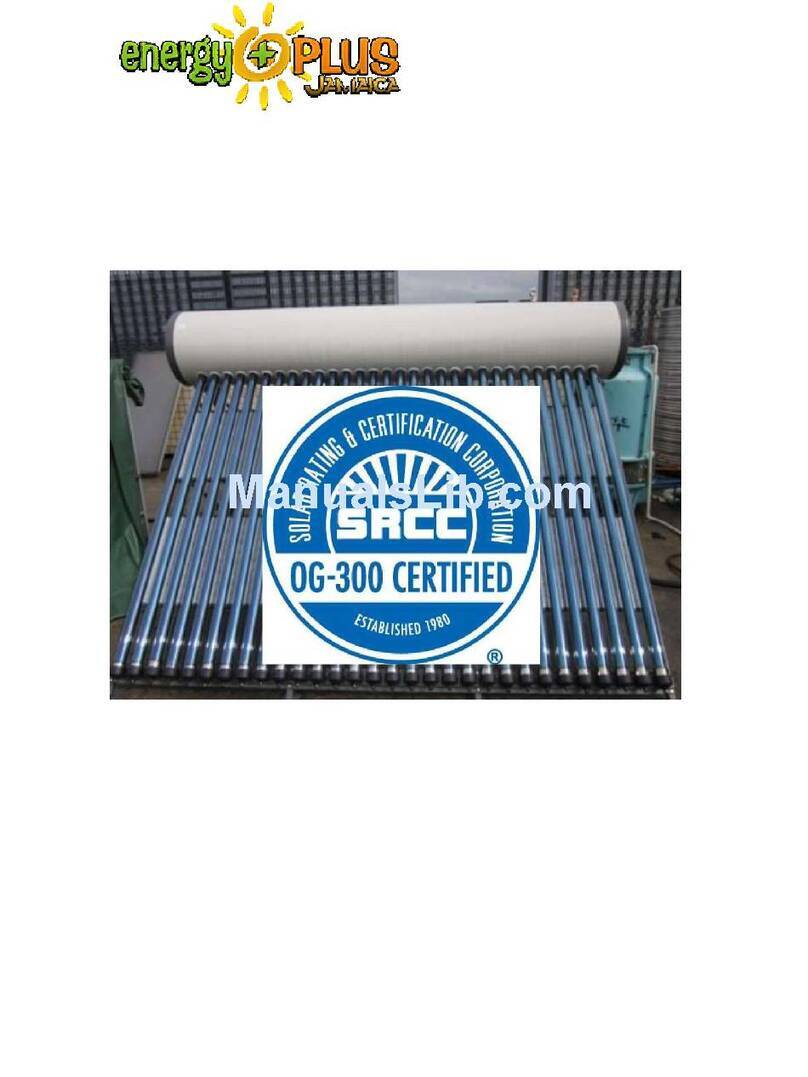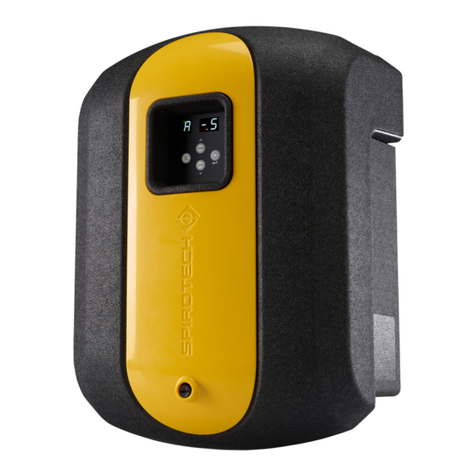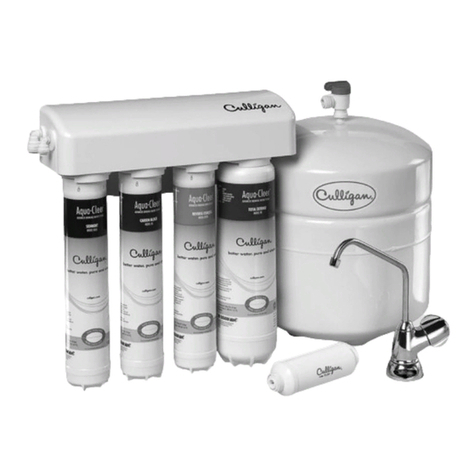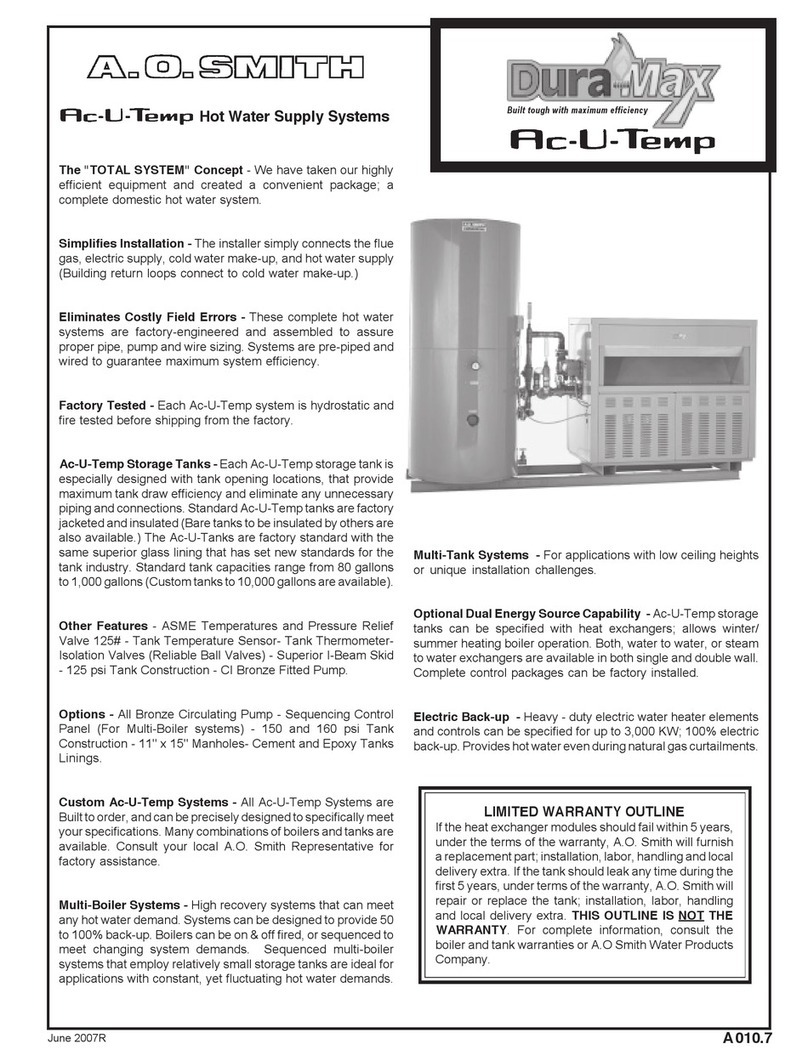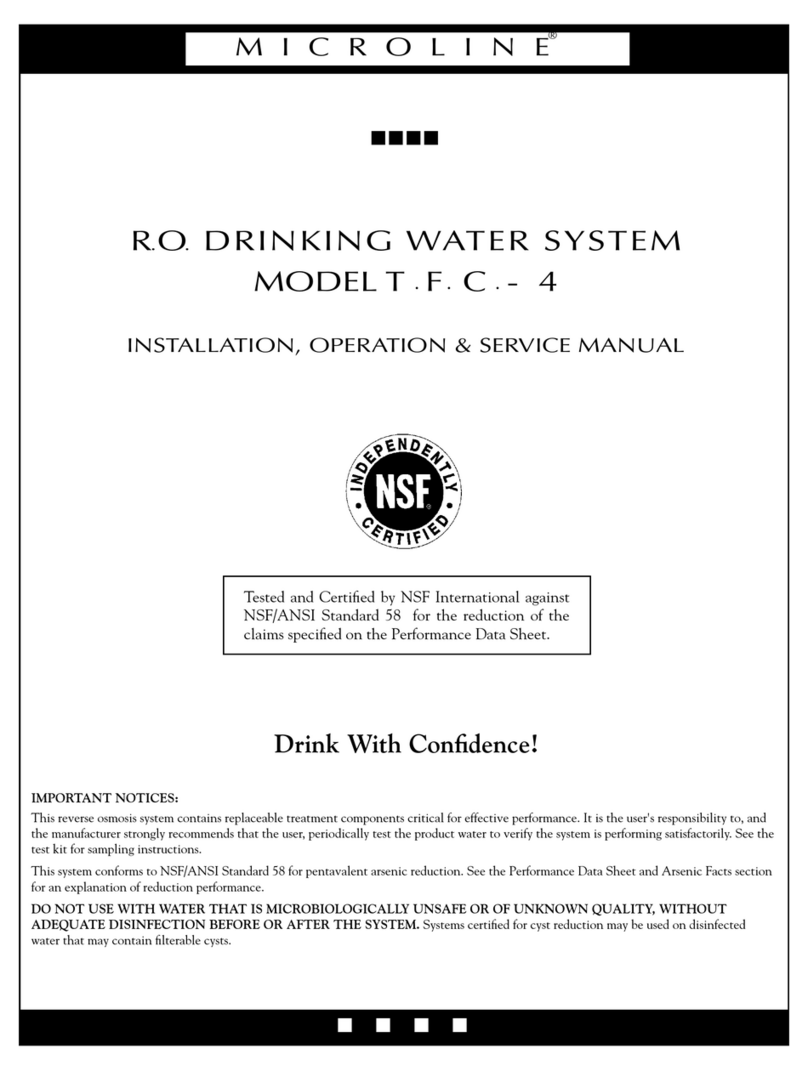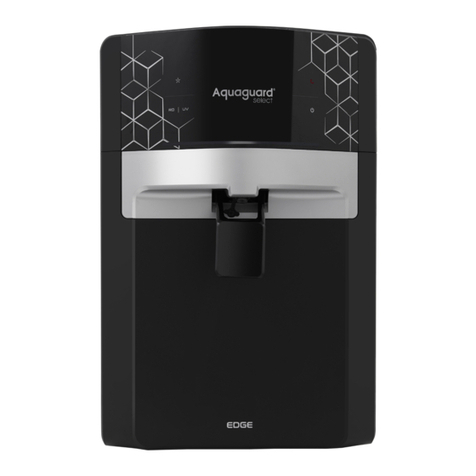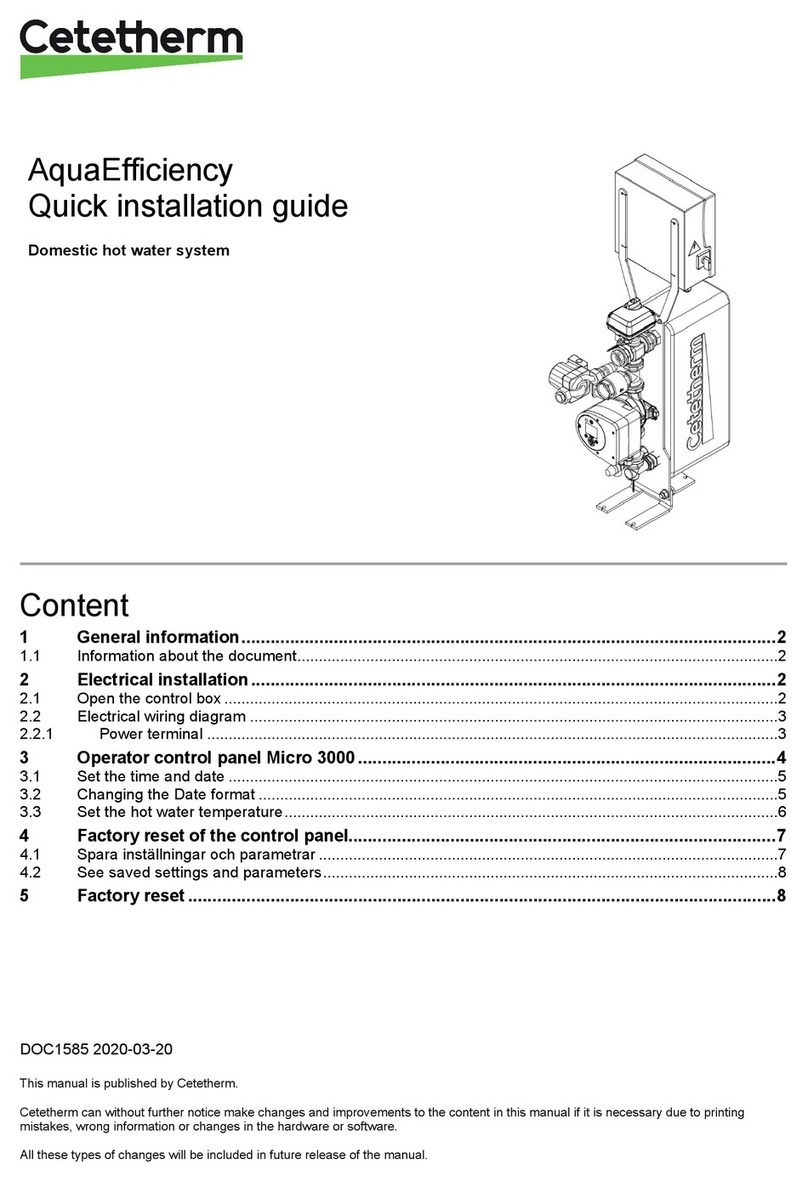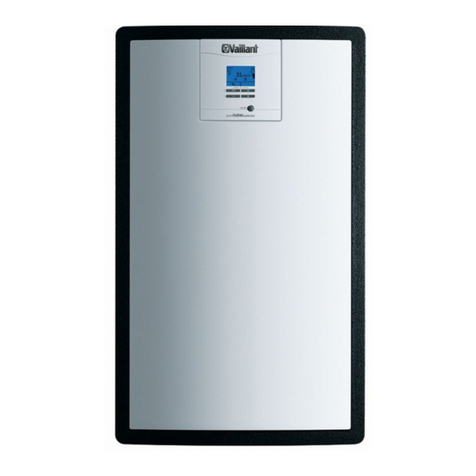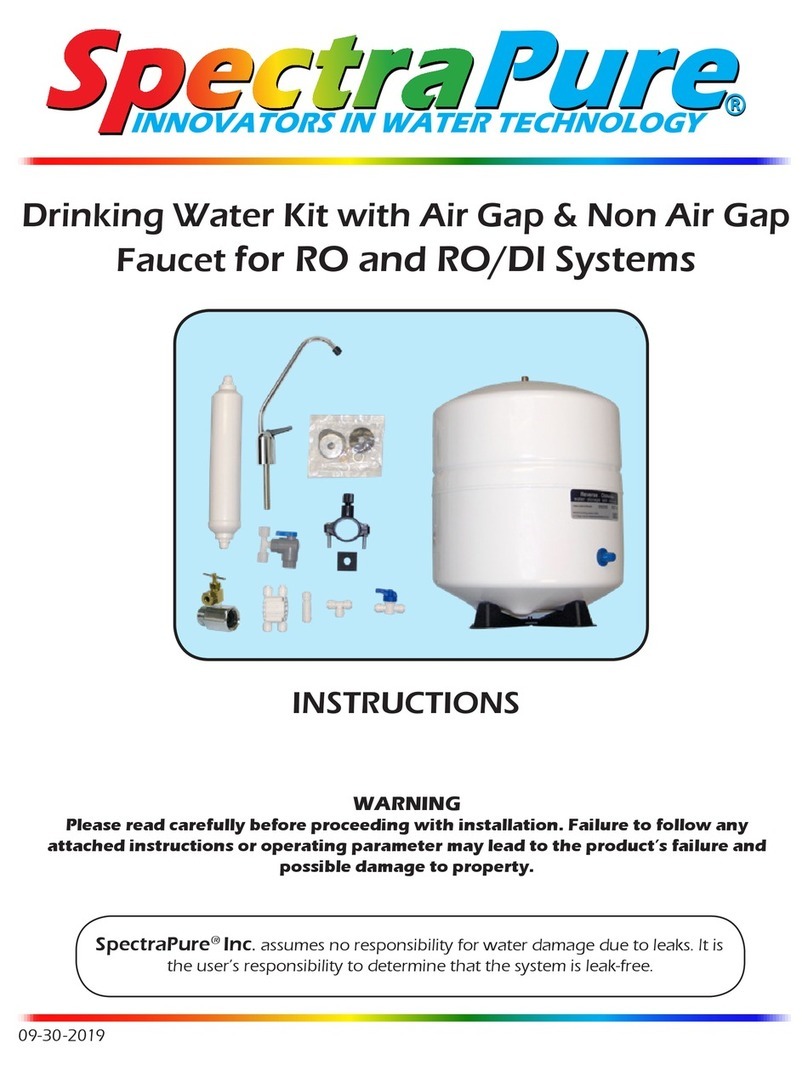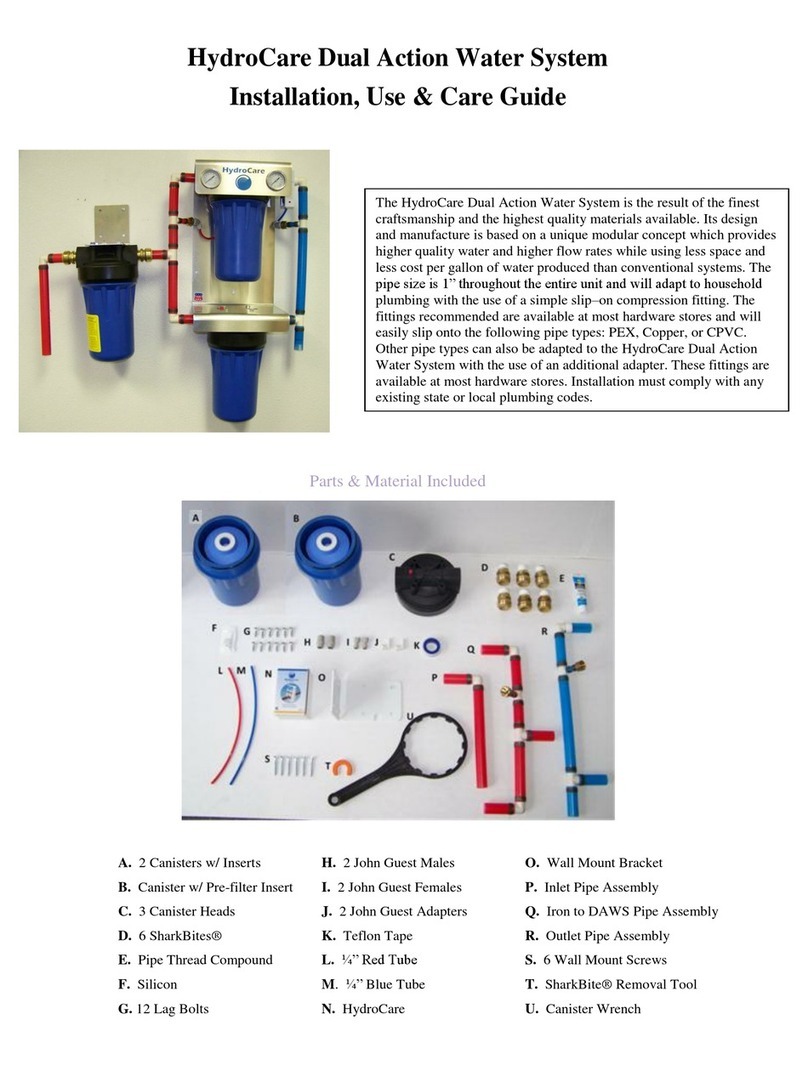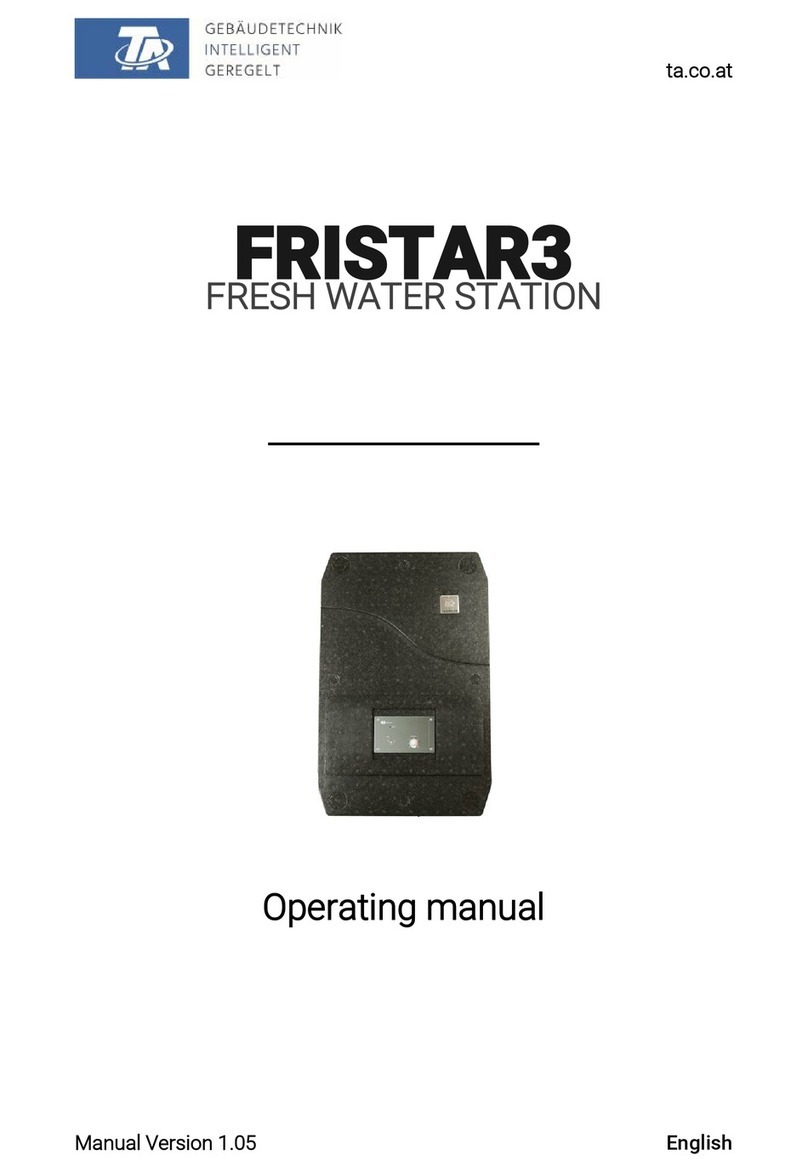von-Drais-Straße 7 • D-55469 Simmern / Hunsrück • Tel: +49 6761 96509-00 • Fax: -01 • www.oxyflex.de • info@oxyflex.de (Status Dec. 2018)
MAINTENANCE INSTRUCTIONS
The OXYFLEX®- MF1100 membrane plate diffuser is a low-maintenance system and is partially self-cleaning due
to the different specific air loads during the normal operating cycle. Especially with an intermittent operation mode,
the normal operation cycle can be used for parallel maintenance as described below. Depending on the operating
conditions we recommend an appropriate maintenance cycle. This maintenance cycle is also used for removing
deposits after longer periods of inactivity and long-term operation with low specific loads.
Maintenance cycle
Any deposits are removed by short-term load-dependent changes of the membrane extension. This also prevents
any accumulation of biological growth.
•EPDM membranes:
We recommend daily and no less than weekly maintenance loading in accordance with the diffuser version
(see table 1 on page 8) of approx. 15-30 minutes. Using intermittent operation, the first 10-15 minutes of each
aeration cycle are used with the higher maintenance air flow in advance of standard operation.
•TPU membranes:
We recommend a brief pressure relief on minimum daily basis (system pressure reduction of approx.
100mbar) for the duration of minimum 5 minutes and a quick restart to the maintenance loading in accordance
with the diffuser version (see table 2 on page 8) for the duration of approx. 5-10 minutes. Using intermittent
operation, pressure is to be briefly relieved at the end of each aeration cycle, next aeration cycle is to be
started for the first 5-10 minutes with the higher maintenance air flow (see table 2 on page 8) in advance of
standard operation.
Deviating procedures are possible in consultation with Supratec.
Monitoring
The bubble pattern and the pressure loss should be checked and documented at regular intervals under similar
operating conditions (such as water level and air quantity). The pressure loss development in the load-dependent,
seasonal comparison makes it possible to evaluate the condition of the container objectively.
In the event of significant changes of the bubble pattern (e.g. partial massive large bubbles instead of homogenous
fine bubble pattern) and/or increase of pressure loss of the system (for more than 40 hPa compared to
commissioning), Supratec should be consulted immediately. Particularly in the case of systems that are operated
intermittently, there is a risk that damaged diffusers can allow the ingress of live sludge into the entire pipework
system. This will adversely affect the function and service life of all diffusers.
Cleaning
The condition of the diffusers must be checked whenever the tank is emptied. Particular attention must be paid to
soiling (deposits, sludge, coverings etc.), which can usually be easily removed from the membranes. Depending on
the type and composition of the soiling, one of the following methods or a combination of several methods might be
required. Testing for compatibility and successful results must always be carried out first on individual membranes
(particularly with alkalis and acids). We recommend:
•Manually: Cleaning with water and a soft brush is often sufficient for removal of existing deposits
•Alkaline solutions: Diluted alkaline cleaning agents can usually be used to help with manual cleaning.
•Acids: Recognizing pressure increase, dosing of diluded acids in to the compressed air can be
required in order to clean the membranes (compare below information)
Acid dosing
In systems in which limescale deposits are to be expected, we recommend that these systems are cleaned
with diluted acid (≤ 85% formic acid for EPDM membranes or ≤ 30% acetic acid for TPU membranes) at
regular intervals. If necessary, diluted acid is metered into the compressed air in order to minimise the
